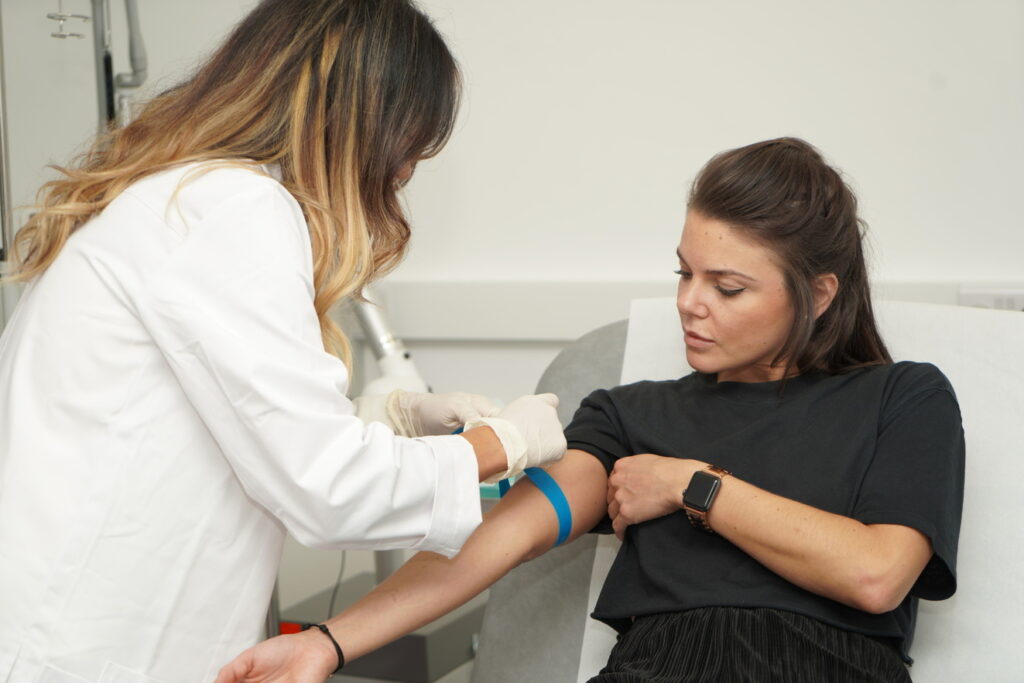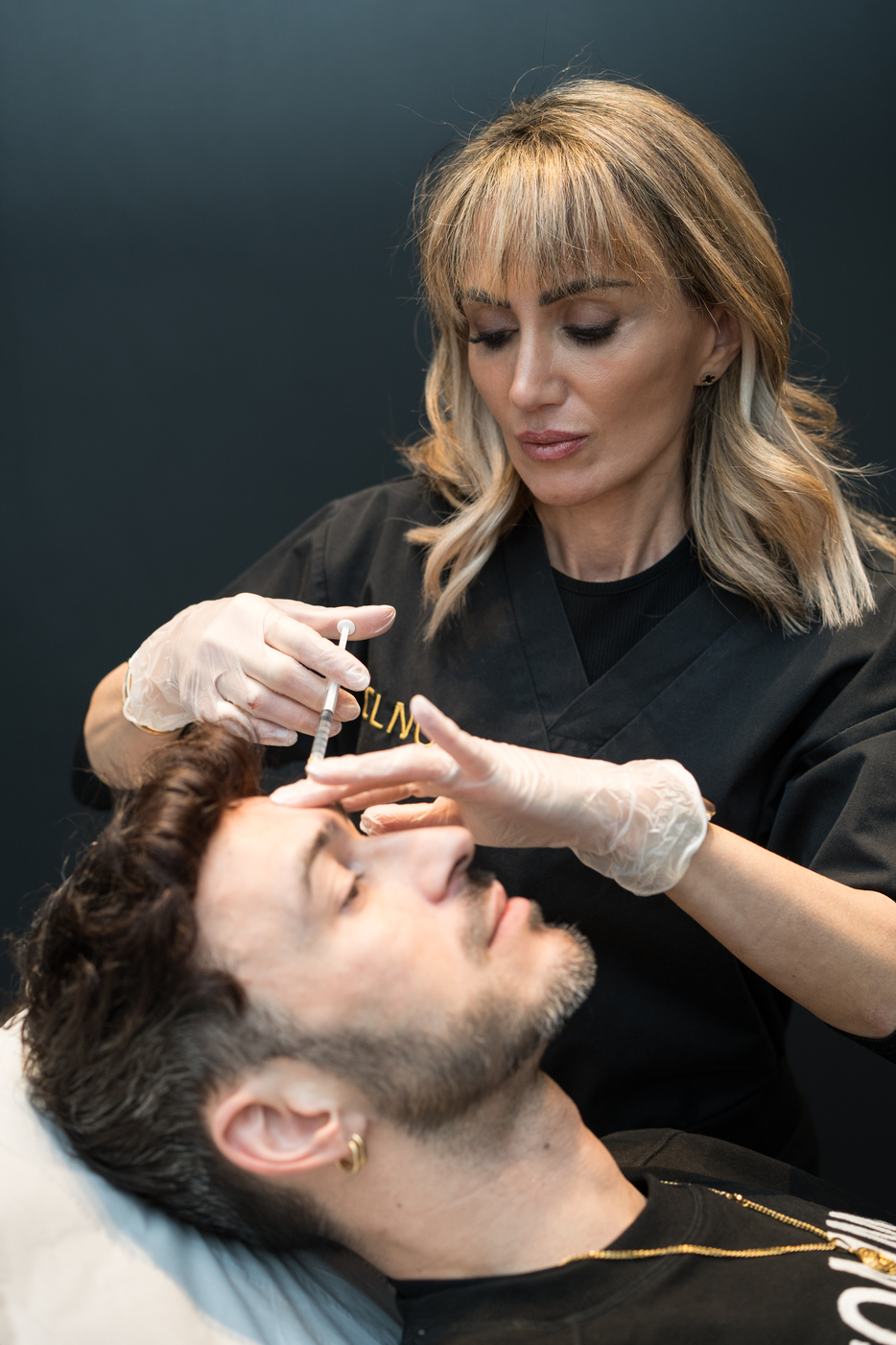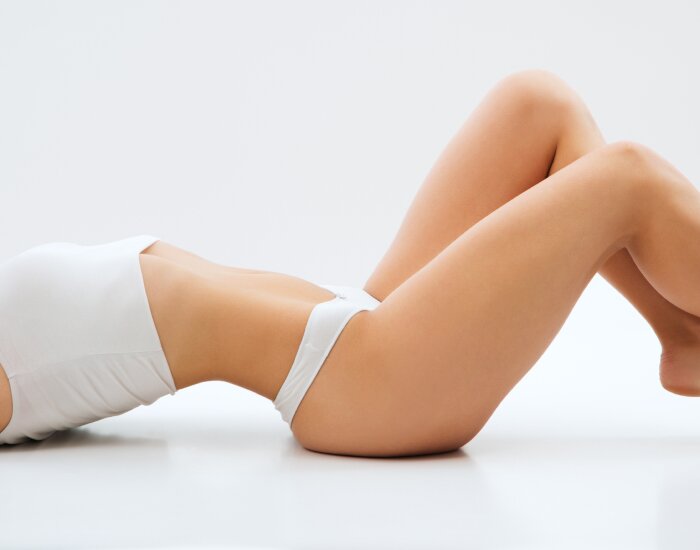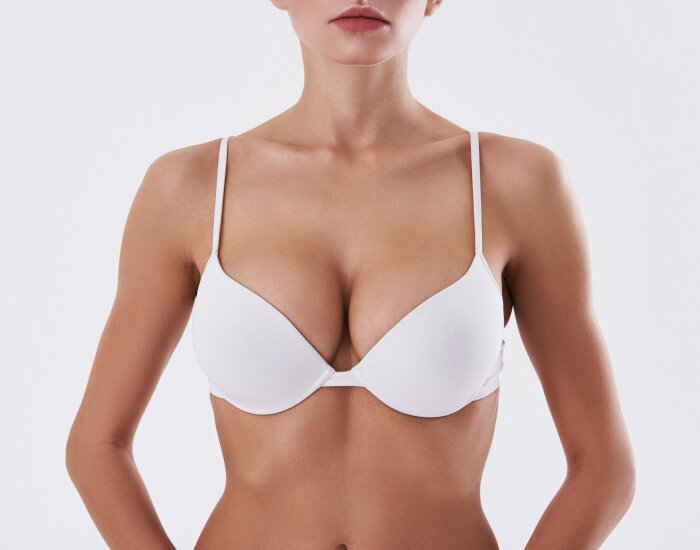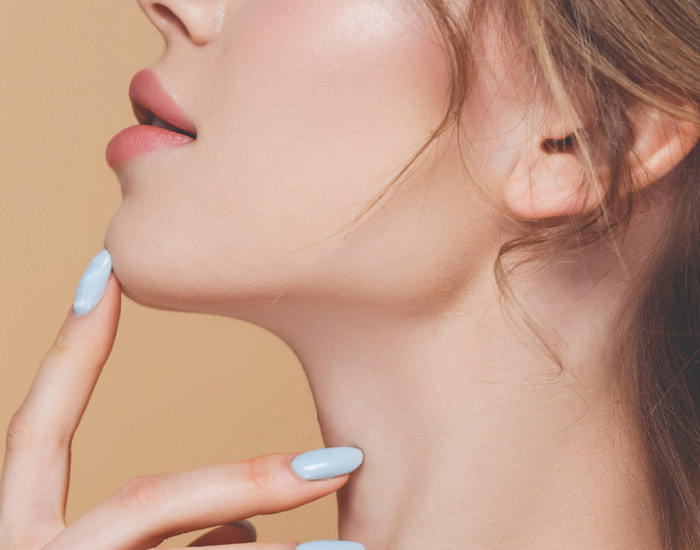A chiselled jawline has become one of the most requested aesthetic goals in clinic – helped along by social media filters, high‑definition cameras and celebrity “snatched” profiles. Yet genetics, weight change, skin laxity and even how you hold your phone all influence how defined your jaw looks.
As a consultant plastic surgeon in Manchester and Cheshire, I assess hundreds of faces each year. The good news is that almost everyone can make meaningful improvements, whether through simple lifestyle tweaks or advanced in‑clinic procedures. We break down every evidence‑based option and includes the latest medical treatments such as dermal fillers, PDO threads and radio‑frequency–assisted lipolysis (FaceTite). Use the contents table below to jump to the section that interests you, or read straight through for a masterclass.
Jawline Anatomy
- Mandible – the U‑shaped bone that frames the lower face. Its angle (gonion) and forward projection (pogonion) largely dictate how “angular” the jaw looks.
- Masseter muscle – powerful chewing muscle that adds bulk at the back of the jaw. Hypertrophy can create a squared, wide lower face.
- Subcutaneous fat – genetically determined; often thicker under the chin (the “submental pad”).
- Platysma & SMAS – support structures that hold skin and soft tissue in against gravity.
- Skin quality – collagen & elastin levels keep the outline crisp. UV exposure, smoking and age reduce both.
Understanding these layers explains why a one‑size‑fits‑all solution rarely works. A patient with a small mandible may benefit most from filler to build bone‑like structure, whereas someone with heavy fat may need FaceTite or liposuction first.

Factors That Blur Your Jaw Definition
- Genetics – the starting point of bone size and fat distribution.
- Ageing – collagen loss after 30 causes skin laxity; fat pads descend.
- Weight fluctuation – repeated gain/loss stretches skin and deep ligaments.
- Posture – prolonged head‑forward position (laptops, mobiles) slackens platysma and deepens double chins.
- Hormones & Water retention – oestrogen fluctuations or high‑salt diets can make the lower face appear puffy.
- Dental or occlusal issues – underbites/overbites can hide the chin.
Record these drivers in a mirror selfie diary; it will help you and your clinician decide where to intervene first.
Lifestyle Changes
Before considering clinic‑based treatments, optimise the basics. They cost nothing and protect any investment you make later.
| Pillar | Why It Matters | Practical Tip |
|---|---|---|
| Body‑fat management | Submental fat responds to overall fat loss. | Aim for 10–15 % body‑fat (men) or 18–22 % (women). Couple resistance training with 500 kcal daily deficit. |
| Protein intake | Collagen is protein‑based; dietary deficiency accelerates laxity. | 1.2–1.6 g protein/kg bodyweight daily. |
| Hydration | Dehydrated skin collapses, softening jaw contours. | 35 ml water/kg bodyweight daily. |
| Sleep | Growth hormone peaks during deep sleep and aids collagen repair. | 7½–8 hours nightly; keep screens out of the bedroom. |
| UV protection | UV destroys dermal collagen. | Broad‑spectrum SPF 30+ every morning, even in Manchester drizzle. |
| Nicotine & alcohol limits | Both decrease capillary perfusion, slowing collagen synthesis. | If you smoke, quitting gives a bigger lift than any serum. |
Targeted Jawline Exercises
Do they really work? Evidence is mixed, but EMG studies show that strengthening the suprahyoid muscles can slightly elevate the hyoid bone and tighten skin under the chin. Consider them a supplement, not a stand‑alone cure.
Three Evidence‑Informed Moves (5 minutes daily)
- Chin Lift Hover Sit upright, tip head back 45 °, lips closed, and “hover” lower jaw forward without wrinkling the neck. Hold 10 s, repeat ×10.
- Vowel Resistance Drill Place fists under chin. Say long “E” while gently pushing down against fists for 5 s. Rest 5 s. Do 3 sets of 10.
- Tongue‑Roof Press Tongue pressed against palate, close teeth gently, hum for 30 s. This activates the mylohyoid and tightens the floor of mouth.
Consistency is key; track progress with fortnightly profile photos under identical lighting.
Posture, Tech Neck and Breathing Habits
- Head‑forward tilt of just 2 cm can add the appearance of 2 kg of submental fat on camera.
- Mouth‑breathing keeps the jaw relaxed and encourages droop. Nasal‑breathing automatically sets the tongue to the palate, subtly pushing the mandible forward.
Quick reset routine (60 seconds):
- Stand against a wall, heels, buttocks, shoulder blades and back of head touching.
- Glide the chin straight backwards (don’t tilt) creating a double chin – hold 5 s.
- Release and step forward maintaining new head position.
Do it hourly if you work at a desk.
Skin Quality and Topical Skincare
Even the sharpest bony framework looks soft if the overlying skin is crepey. Evidence‑backed ingredients:
- Retinoids (Tretinoin or retinaldehyde) – proven to increase dermal collagen after 12 weeks.
- Vitamin C (L‑ascorbic acid 10–20 %) – enhances collagen cross‑linking.
- Peptides (e.g., Matrixyl) – signal fibroblasts to produce ECM components.
- SPF – non‑negotiable defences against UVA‑induced elastosis.
A simple morning routine of cleanser, vitamin C serum, moisturiser, SPF, and evening cleanser, retinoid can visually tighten the jawline by improving texture and reflectivity.
At‑Home Devices – Do They Work?
- Microcurrent rollers – give a transient tightening by stimulating facial muscles; effects fade in hours.
- LED masks (red light 630–660 nm) – modest collagen boost after 8–12 weeks if used >3× weekly.
- Radio‑frequency wands – consumer versions are under‑powered; expect skin‑care benefits rather than fat reduction.
Think of them as “maintenance tools” once professional treatments have done the heavy lifting.
CLNQ Non‑Surgical Treatments
Dermal Fillers for Jawline Sculpting
- What they do – Hyaluronic‑acid (HA) jawline fillers or longer‑lasting calcium hydroxyapatite (CaHA) can mimic bone, rebuilding a poorly projected chin or angle.
- Procedure – Cannula or needle along mandible border; 1–4 ml per side.
- Longevity – 12–18 months (HA) or up to 24 months (CaHA).
- Downtime – minimal; bruising possible for 3–5 days.
- Ideal for – young patients with good skin but weak skeletal support; post‑weight‑loss hollowing.
Botulinum Toxin for Masseter Slimming
- Action – Partially relaxes the masseter, reducing its bulk; can also relieve bruxism.
- Units – Typically 25–40 units per side of Masseter Botox® or equivalent.
- Results – Visible slimming from 4–6 weeks, lasts ~4 months.
- Combine with – filler at the gonial angle for a “V” or “L”‑shaped jaw.
PDO and COG Threads
- Mechanism – Barbed or cone threads are inserted via cannulas, engage the SMAS and lift soft tissue; collagen induction as they dissolve (6–8 months).
- Lift vs collagen – Immediate mechanical lift (30 %) + gradual collagen (70 %).
- Longevity – 12–18 months average.
- Ideal for – mild jowls, good skin thickness, patients not ready for surgery.
- Downtime – 3 days of tenderness, rare dimpling which resolves.
Other Energy‑Based Options
- Morpheus8 RF microneedling – deeper penetration (up to 4 mm) stimulates dermal & adipose remodelling.
- Ultherapy (micro‑focused ultrasound) – strong literature for SMAS tightening over 3–6 months.
- HIFU “lunchtime” devices – variable energy; ensure CE‑marked systems.
Surgical Options
While non‑surgical modalities have leap‑frogged in capability, surgery remains gold‑standard when:
- Skin excess or platysmal banding is moderate–severe.
- Sub‑platysmal fat thickens with age.
- Skeletal deficiencies are large (e.g., microgenia).
FaceTite (Radio‑frequency–Assisted Lipolysis)
- What is it? – A minimally invasive RF probe Facetite inserted through 1–2 mm entry points melts sub‑mental fat and contracts the fibroseptal network. Temperatures of 65 °C internally and 42 °C on skin surface trigger up to 36 % skin contraction (peer‑reviewed data).
- Anaesthesia – Local anaesthetic.
- Who benefits – Patients with moderate fat and early laxity who want one‑off tightening without a scar.
- Results timeline – 3 weeks noticeable; maximum at 6–9 months; lasts 5+ years if weight stable.
- Downtime – 3–5 days in a chin strap; bruising/swelling subsides within 10 days.
Submental (Neck) Liposuction
- Key benefit – permanent removal of fat; minor skin tightening. The double chin liposuction helps define the chin and jawline.
- Scar – 3 mm hidden in sub‑mental crease.
- Recovery – back to work in 5‑7 days; gym after 4-6 weeks.
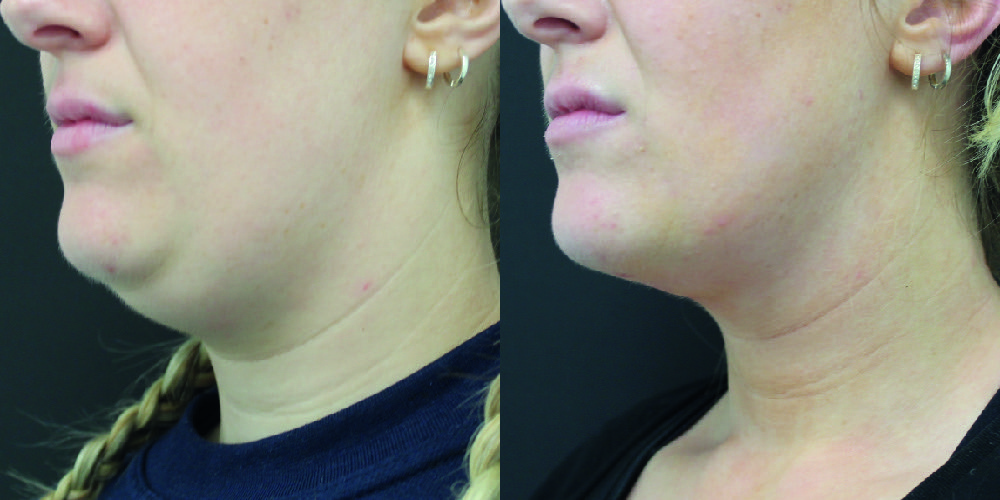
Mini or Full Neck Lift
- Approach – pre‑/post‑auricular incisions, platysma plication and skin redraping.
- Scar – may have a scar under chin and then scars in front and behind ears.
Genioplasty & Chin Implants
- Why – augment skeletal projection where fillers are insufficient.
- Implants – silicone, carved to bespoke dimensions; permanence but reversible removal.
- Sliding genioplasty – bone is cut and advanced; no foreign material.
Surgery is best considered after non‑surgical routes plateau or if rapid, long‑lasting change is required.
Frequently Asked Questions
How quickly can I see results from jawline filler?
Immediately. Expect mild swelling for 48 hours; final contour at 2 weeks.
Will FaceTite leave loose skin?
No, its effect is dual – fat reduction and collagen contraction. Skin quality actually improves over 6 months.
Are jawline exercises enough on their own?
For people under 25 with ideal BMI, they may suffice. Beyond that age or if laxity/fat present, professional treatments outperform.
How painful are PDO threads?
With local anaesthetic, most patients rate discomfort 3/10; paracetamol is usually sufficient afterwards.
What is the safest age for jawline surgery?
Once skeletal growth completes (≈ 18 years) but most surgical candidates are 35+. Skin quality at that age still heals well.
Conclusion
- Foundation first – posture, weight, skincare and chew‑muscle balance can visibly sharpen the jaw for free.
- Filler = structure; toxin = slimming; threads = lifting; FaceTite = energy‑driven tightening. Choosing the right sequence maximises value.
- Expect timeline, not miracle. True collagen remodelling takes months, not days.
Ready to begin? Book a consultation with our team at CLNQ Manchester or CLNQ Cheshire. We have experts in non-surgical and surgical techniques.

